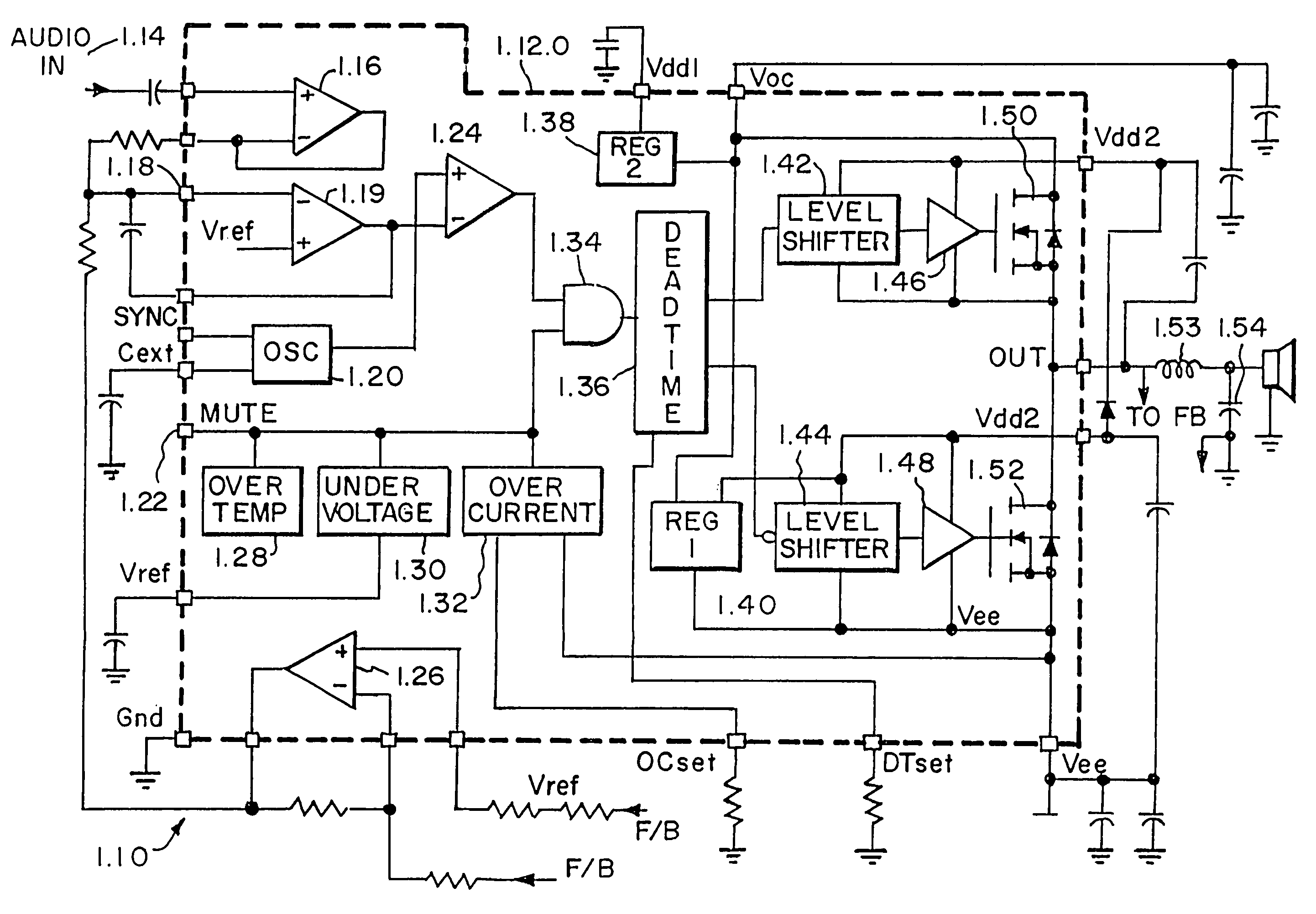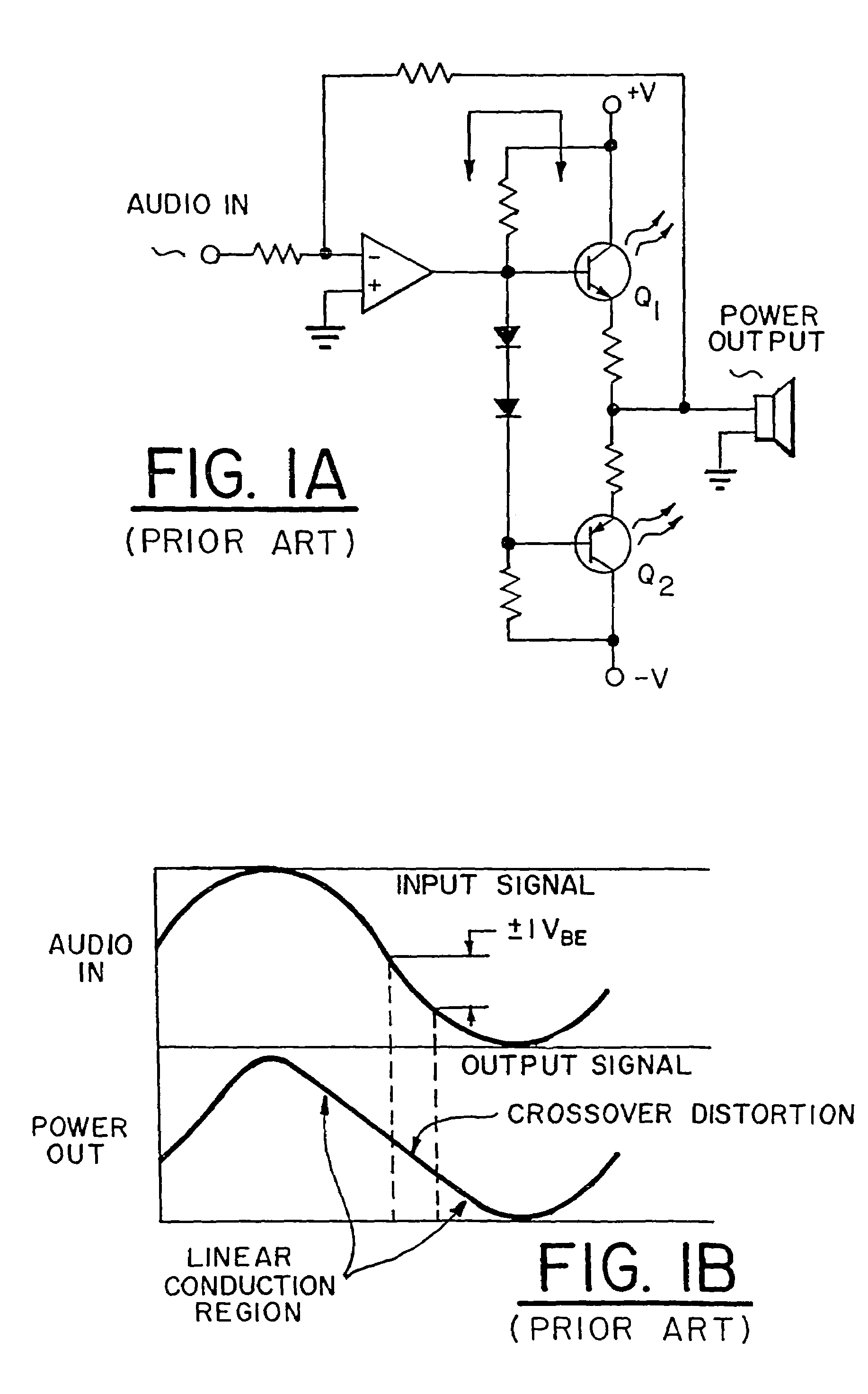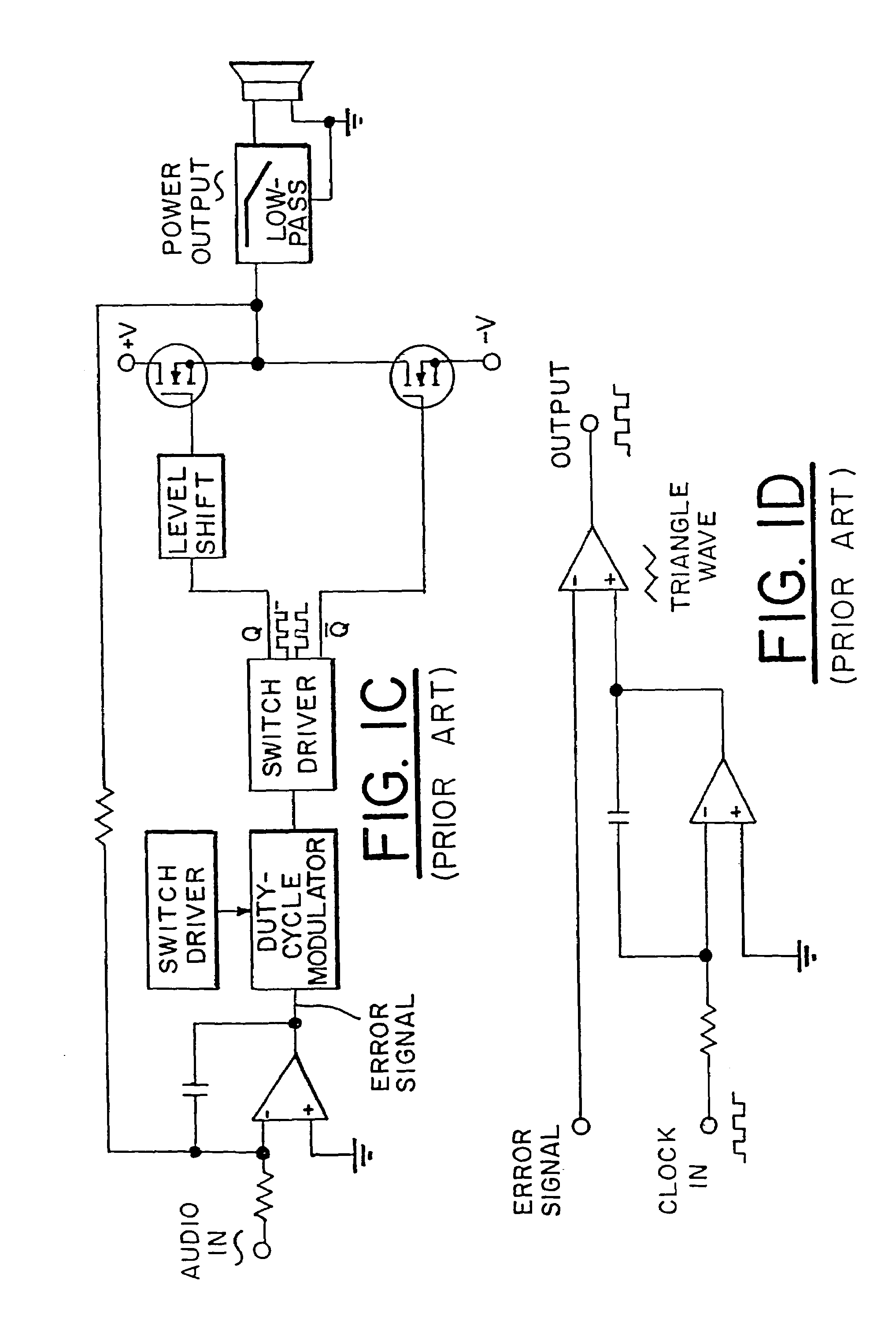Monolithic class D amplifier
a technology of monolithic amplifiers and amplifiers, applied in the direction of low frequency amplifiers, gated amplifiers, electrical transducers, etc., can solve the problems of reducing the efficiency of the amplifier, affecting the operation of the amplifier, and shortening the short circuit of two transistors across the load, so as to reduce the pinching effect, maximize the specific channel width, and minimize the cell area
- Summary
- Abstract
- Description
- Claims
- Application Information
AI Technical Summary
Benefits of technology
Problems solved by technology
Method used
Image
Examples
embodiment 1
[0101]The first embodiment of the invention is shown in FIG. 1J. Analog switch S1 has been added to the integrator circuit A1. Switch S1 is controlled by the disable signal. When the output bridge is disabled, the S1 switch is closed and A1 becomes a summing amplifier instead of an integrator. Since the bridge is not switching, the voltage across the speaker drops to zero, and the output of A2 goes to +6V. In this configuration A1 is an inverting amplifier with a gain of −R3 / R2 times the input. R3 is chosen here so that A1 does not saturate prior to start-up. So, when the amplifier is enabled, the bridge starts switching and switch S1 is opened. The error voltage output of A1 continues to follow the input as it was before S1 was opened, eliminating the start-up thump.
embodiment 2
[0102]The second embodiment of the invention is shown in FIG. 1K and further in FIGS. 1L and 1M. This embodiment relates to audio IC PWM controllers where the integration amplifier A1 is external to the IC.
[0103]Referring to FIG. 1K, when the IC U3 is disabled, the switching of the output stops. S3 connects the mute signal to ground which controls switch S2 so that the + input to the PWM comparator is connected to +6V. When the disable signal is removed, switch S3 allows a current source to charge a capacitor on the mute node and cause a slowly moving control voltage at switch S2. While the control voltage is low, the output begins to switch since the part is enabled. The PWM comparator commands a 50% square wave regardless of the error signal because the + input to the comparator is at +6V, the midpoint of the triangle wave on the − input of the comparator. The 50% duty cycle output of the H-Bridge is filtered to result in zero voltage across the load. As the control voltage rises,...
PUM
 Login to View More
Login to View More Abstract
Description
Claims
Application Information
 Login to View More
Login to View More - R&D
- Intellectual Property
- Life Sciences
- Materials
- Tech Scout
- Unparalleled Data Quality
- Higher Quality Content
- 60% Fewer Hallucinations
Browse by: Latest US Patents, China's latest patents, Technical Efficacy Thesaurus, Application Domain, Technology Topic, Popular Technical Reports.
© 2025 PatSnap. All rights reserved.Legal|Privacy policy|Modern Slavery Act Transparency Statement|Sitemap|About US| Contact US: help@patsnap.com



